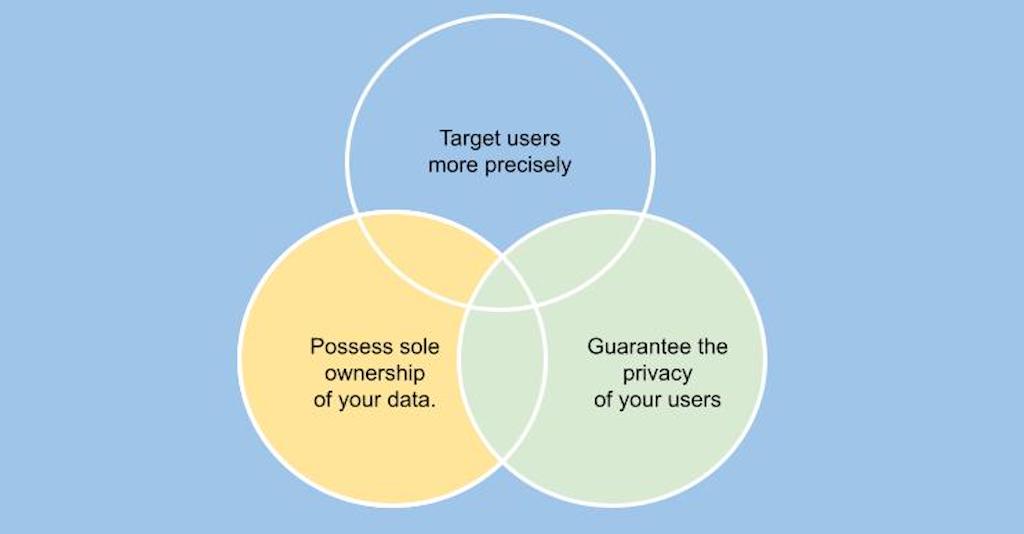
Introduction:
In the ever-evolving landscape of digital advertising, first-party data has emerged as a valuable asset for publishers. With the impending demise of third-party cookies and increased privacy regulations, publishers are realizing the growing significance of leveraging their own data to drive revenue and provide personalized experiences. In this blog, we delve into the world of first-party data monetization and explore strategies that publishers can employ to maximize its value.
The Significance of First-Party Data in the Post-Cookie Era
a. Understanding the impact of the phasing out of third-party cookies on publisher data strategies:
The phasing out of third-party cookies, driven by privacy concerns and browser changes, has a significant impact on publisher data strategies. Third-party cookies, which track user behavior across websites, have traditionally provided valuable insights for advertisers and publishers. With their decline, publishers are facing limitations in tracking and targeting capabilities. This shift highlights the need for alternative data sources, with first-party data emerging as a valuable solution.
b. Exploring the value of first-party data in enabling personalized targeting and engagement:
First-party data refers to information collected directly from users through interactions with a publisher's own website, app, or other owned platforms. This data holds immense value in the post-cookie era. Unlike third-party data, which relies on tracking users across the web, first-party data provides insights into the publisher's own audience, their preferences, behaviors, and interests. By leveraging this data, publishers can deliver highly personalized and relevant content, advertisements, and experiences to their audience, leading to increased engagement and better user satisfaction.
c. Discussing the advantages of relying on first-party data to build direct relationships with audiences:
One of the major advantages of first-party data is its ability to help publishers build direct relationships with their audiences. By collecting data directly from users, publishers establish a direct connection, bypassing intermediaries. This direct relationship allows publishers to gain a deeper understanding of their audience's preferences, needs, and intent, fostering stronger connections and trust.
Relying on first-party data has several benefits for publishers:
Data Accuracy and Quality: First-party data is derived directly from user interactions, ensuring its accuracy and reliability. Publishers have control over the data collection process, resulting in high-quality insights.
Greater Data Privacy: First-party data collection occurs with user consent, ensuring compliance with privacy regulations. This transparency and control over data collection enhance user trust and mitigate privacy concerns.
Long-Term Value: First-party data is owned by publishers and can be continuously collected and refined over time. This long-term value enables publishers to gain deep insights into their audience, tailor content and advertising strategies, and adapt to changing user needs.
In summary, first-party data holds significant importance in the post-cookie era for publishers. It enables personalized targeting and engagement, allows publishers to build direct relationships with their audience, and provides accurate and privacy-conscious insights. By leveraging first-party data effectively, publishers can navigate the evolving digital landscape, deliver personalized experiences, and drive better business outcomes.
Approaches to Collecting First-Party Data
a. Leveraging website analytics and user registration:
One approach to collecting first-party data is through website analytics and user registration. By leveraging analytics tools, publishers can track user behavior on their websites, such as page views, click-through rates, and time spent on various pages. This data provides valuable insights into user interests, preferences, and browsing habits, helping build rich first-party data profiles. User registration is another effective method where users voluntarily provide information during the registration process, enabling publishers to gather demographic details, interests, and contact information. This approach allows publishers to gather direct and accurate data from their audience, enhancing personalization and targeting capabilities.
b. Implementing user consent and data capture mechanisms:
Obtaining user consent and implementing data capture mechanisms are crucial steps in collecting first-party data while adhering to privacy regulations such as GDPR and CCPA. Publishers should implement transparent consent management platforms that clearly communicate the purpose and use of data to users. Consent forms can be integrated into the user experience, providing users with control over their data and the ability to opt-in or opt-out. Data capture mechanisms, such as website forms or cookie banners, should be implemented to capture user preferences, contact information, and other relevant data. It is essential to ensure compliance with data protection regulations and maintain transparent data practices to build trust with users.
c. Encouraging user engagement and feedback:
Engaging users and gathering feedback is an effective way to collect valuable first-party data. Publishers can employ strategies such as surveys, quizzes, and interactive content to encourage user participation. Surveys can be conducted to gather insights on user preferences, interests, and feedback on the website or content. Quizzes and interactive content can capture user engagement while providing entertainment or educational value. These interactive elements can help publishers understand user preferences, behaviors, and areas of interest, enriching the first-party data profiles. By directly engaging with users, publishers can obtain valuable insights and preferences that can be utilized for personalized targeting and content customization.
In summary, collecting first-party data involves leveraging website analytics and user registration to track behavior and preferences, implementing consent and data capture mechanisms to comply with privacy regulations, and encouraging user engagement and feedback through interactive elements. These approaches allow publishers to build robust first-party data profiles, enabling effective personalization, targeting, and content customization to enhance user experiences and drive better business outcomes.
Leveraging First-Party Data for Monetization
a. Audience Segmentation and Targeting:
Publishers can use their first-party data to segment their audience based on demographics, interests, and behaviors. By analyzing the data collected from user interactions, publishers can gain insights into the preferences and characteristics of their audience. This enables precise audience segmentation, allowing publishers to deliver highly targeted and relevant ads to specific segments. Advertisers value this level of targeting as it increases the chances of their ads resonating with the intended audience, leading to higher engagement and conversion rates. By leveraging first-party data for audience segmentation and targeting, publishers can attract advertisers looking for quality targeting options, driving monetization opportunities.
b. Private Marketplaces (PMPs) and Data Marketplaces:
Private Marketplaces (PMPs) and data marketplaces provide monetization opportunities for publishers with valuable first-party data. Publishers can partner with PMPs, which are invitation-only platforms that connect premium publishers with advertisers. PMPs enable publishers to offer their first-party data to advertisers looking for exclusive and quality inventory. Advertisers can leverage this data to target specific audience segments and run more effective ad campaigns. Similarly, data marketplaces act as platforms where publishers can sell their first-party data directly to advertisers or data buyers. These marketplaces enable publishers to monetize their data assets by making it available to interested parties, creating additional revenue streams.
c. Customized Ad Offerings and Packages:
Publishers can leverage their first-party data to create customized advertising offerings and packages that resonate with specific audience segments. By analyzing user preferences and behaviors, publishers can understand the unique needs and interests of their audience. This allows them to develop ad packages tailored to specific segments, delivering highly relevant and engaging campaigns to advertisers. For example, a publisher with first-party data indicating a segment interested in outdoor activities can create an ad package specifically targeting outdoor gear and adventure brands. These customized offerings increase the value proposition for advertisers, driving higher interest and potential revenue.
In summary, leveraging first-party data for monetization involves segmenting and targeting audiences based on data insights, utilizing Private Marketplaces (PMPs) and data marketplaces to monetize data assets, and creating customized ad offerings and packages. By harnessing the power of first-party data, publishers can provide advertisers with highly targeted and effective advertising opportunities, resulting in increased advertiser interest, engagement, and ultimately, revenue generation.

Building Partnerships and Collaborations
a. Collaborating with Data Management Platforms (DMPs) and Data Onboarding Providers:
Publishers can collaborate with Data Management Platforms (DMPs) and Data Onboarding Providers to enhance and activate their first-party data, expanding monetization opportunities. DMPs are technology platforms that assist in managing, analyzing, and segmenting data. By partnering with DMPs, publishers can leverage their expertise and infrastructure to enhance their first-party data. DMPs can help publishers aggregate and organize data from various sources, enriching it with additional data sets, and enabling more robust audience segmentation and targeting. This collaboration allows publishers to maximize the value of their first-party data, attracting advertisers looking for advanced targeting capabilities. Similarly, data onboarding providers facilitate the integration and activation of first-party data across various marketing and advertising platforms. By working with data onboarding providers, publishers can ensure their first-party data is accessible and actionable for targeted advertising campaigns, further expanding monetization opportunities.
b. Strengthening Brand Partnerships:
Publishers can strengthen their brand partnerships by forging data-driven collaborations, where first-party data is shared to enhance campaign targeting and effectiveness. This involves establishing mutually beneficial relationships with brands that align with the publisher's audience and objectives. By sharing relevant and anonymized first-party data, publishers can provide brands with deeper insights into their audience, enabling more precise targeting and personalized messaging. This collaboration enhances the value proposition for brands, as they gain access to high-quality data that helps optimize their campaigns. Additionally, these data-driven partnerships can unlock new revenue streams for publishers, as brands may be willing to invest in exclusive access to their audience's data for more effective advertising initiatives. Building strong brand partnerships based on data collaboration can foster long-term relationships, drive revenue growth, and open doors to innovative advertising opportunities.
In summary, building partnerships and collaborations involves collaborating with Data Management Platforms (DMPs) and Data Onboarding Providers to enhance and activate first-party data, expanding monetization opportunities. Additionally, strengthening brand partnerships through data-driven collaborations enables publishers to share first-party data with brands, unlocking new revenue streams and deepening advertiser relationships. These partnerships leverage the power of data to deliver more targeted and effective advertising campaigns, benefitting both publishers and brands.
Privacy and Data Security Considerations
a. Ensuring compliance with privacy regulations:
Maintaining data privacy and adhering to privacy regulations is crucial for publishers when collecting and utilizing first-party data. Regulations such as the General Data Protection Regulation (GDPR) and the California Consumer Privacy Act (CCPA) have established guidelines and requirements for the collection, use, and storage of personal data. It is essential for publishers to understand and comply with these regulations to build trust with users and avoid legal consequences. This includes obtaining proper consent for data collection, providing transparency on data usage, honoring user rights regarding data access and deletion, and implementing mechanisms for users to manage their data preferences. By prioritizing privacy compliance, publishers can establish a foundation of trust and demonstrate their commitment to protecting user privacy.
b. Implementing data security measures:
Data security is a critical aspect of handling first-party data. Publishers must implement robust data protection measures to safeguard user data from unauthorized access, breaches, or misuse. This includes implementing industry-standard security protocols, encryption techniques, and access controls to protect data during transmission and storage. Regular security audits and vulnerability assessments should be conducted to identify and address any potential risks. Publishers should also consider secure data storage options, such as encrypted databases or cloud storage solutions with strong security measures. By implementing rigorous data security practices, publishers can mitigate the risk of data breaches, build user and advertiser confidence, and maintain the integrity of their data assets.
In summary, privacy and data security considerations are vital for publishers when working with first-party data. Ensuring compliance with privacy regulations like GDPR and CCPA is essential to protect user privacy rights and maintain legal compliance. Implementing robust data security measures helps protect user data from unauthorized access and maintains the trust of users and advertisers. By prioritizing privacy and data security, publishers can build a reputation for responsible data handling and foster stronger relationships with their audience and advertising partners.
Conclusion:
In the era of limited third-party data and increasing privacy concerns, first-party data has become a valuable asset for publishers. By implementing strategies to collect, analyze, and leverage their own data, publishers can unlock new monetization opportunities, deliver personalized experiences, and build stronger relationships with their audiences and advertisers. As publishers navigate the evolving landscape, harnessing the power of first-party data will be instrumental in driving revenue growth and ensuring long-term success.
